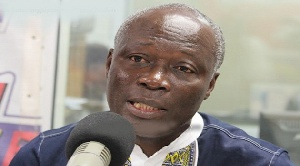The World Bank Group has unveiled a new Country Partnership Strategy (CPS) for Ghana that will see the Washington-based lender provide US$1.4billion in fresh assistance between 2013 and 2016.
The funds will come from the International Development Association (IDA), the bank’s fund for the world’s poorest countries.
In a statement, the bank said the new strategy builds on the important macroeconomic and social gains achieved under the previous Country Assistance Strategy (CAS), which ended in June 2012.
“The CPS is organised around three main themes: improve economic institutions; improve competitiveness and job-creation; and protect the poor and vulnerable,” the bank stated.
It said the new strategy is aligned to government’s medium-term development strategy, the Ghana Shared Growth and Development Agenda (GSGDA), whose main goals include consolidating the country’s middle-income status, accelerating progress toward the MDGs and raising GDP per capita to US$3,000 by 2020.
“The period of the previous strategy saw substantial growth, driven largely by good commodity and mineral prices, and to some extent Ghana’s new oil find,” said the bank. It added that poverty continued to decline under the previous strategy which also saw positive trends in rural development and strong growth in Ghana’s construction and services sectors.
In 2010, Ghana joined the ranks of middle-income economies after its national accounts underwent a major revision that resulted in a 60 percent jump in GDP. The country’s income per capita was US$1,570 in 2012, according to the Ghana Statistical Service (GSS), and the economy expanded by 7.9 percent.
A splurge of government spending however triggered a colossal budget deficit of 11.8 percent of GDP last year, almost thrice the gap in 2011.
The International Monetary Fund (IMF) said last week that short-term risks to the economy have arisen on the back of the sizeable fiscal and current account deficits, while the World Bank said investors are “cautiously optimistic” about the country’s future.
Substantial portfolio
The new country strategy includes support from the International Finance Corporation, the private sector wing of the World Bank, and the Multilateral Investment Guarantee Agency (MIGA), which encourages foreign direct investments by offering political risk insurance guarantees for projects.
The World Bank’s combined support to Ghana is US$3.5billion at present, made up of US$2.3billion in credit and grants from IDA, US$341million in investment guarantees from MIGA, and an IFC portfolio of US$849million.
“The CPS inherits a substantial portfolio consisting of 25 operations with a total commitment of US$1.5billion, in addition to eight regional operations with an additional net commitment of US$752million,” said Yusupha Crookes, World Bank Country Director for Ghana.
Mary-Jean Moyo, IFC Senior Manager for Ghana, added that the new strategy requires increased private sector investment to promote a robust economy, improve job prospects, and create shared prosperity.
“IFC will work closely with other World Bank Group institutions, the government and private companies to encourage public-private partnerships in infrastructure and increased investment across a range of sectors important for Ghana’s future,” she said.
Financial flows during the strategy’s implementation will support social protection programmes such as the National Health Insurance Scheme, Livelihood Empowerment Against Poverty (LEAP), and youth employment programmes.
Business News of Tuesday, 24 September 2013
Source: B&FT
World Bank pledges US$1.4bn in fresh aid

Entertainment















